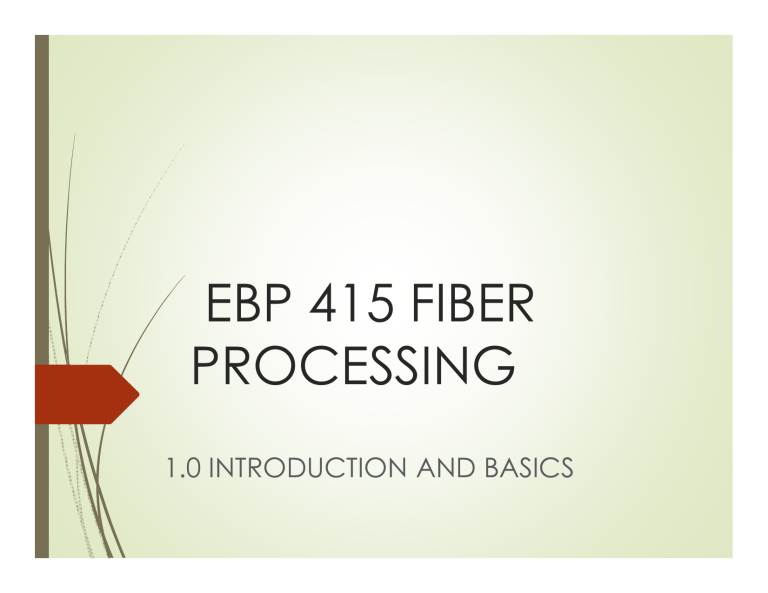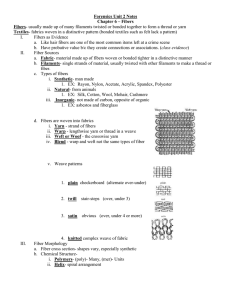
EBP 415 FIBER PROCESSING 1.0 INTRODUCTION AND BASICS Definition A fiber is defined as an object with a length-to-diameter ratio (aspect ratio) of at least 100. Aspect ratio = length / diameter Fiber classification in reinforced plastics falls into two classes: short fibers, also known as discontinuous fibers, with a general aspect ratio (defined as the ratio of fiber length to diameter) between 20 to 60, and long fibers, also known as continuous fibers, the general aspect ratio is between 200 to 500. Table: Fiber glass filament diameter nomenclature (2001 ASM International ASM Handbook, Vol. 21: Composites) Figure: Fiber forms at different scales 1.1 FIBER CLASSIFICATION Natural fibers Vegetable (Plant) Animal Mineral Man-made fibers Inorganic Natural polymer Synthetic polymer Natural fibers classification VEGETABLE FIBERS Cotton VEGETABLE FIBERS Bamboo T-shirts from Chile Natural fiber thermoplastic composites ANIMAL FIBERS MINERAL FIBERS Asbestos fibers Cement pipes Cement wallboard Cement siding Asphalt floor tile Vinyl floor tile Vinyl sheet flooring Flooring backing Construction mastics (floor tile, carpet, ceiling tile, etc.) Acoustical plaster Decorative plaster Man-made fibers classification INORGANIC FIBERS chopped glass fiber Chopped strand mat Glass fiber Glass fiber roving NATURAL POLYMERS- REGENERATED FIBERS Rayon Sorona fiber SYNTHETIC FIBERS Airbag:- nylon 6,6 Firefighter apparel from Polybenzimidazole (PBI) Products made of Kevlar




